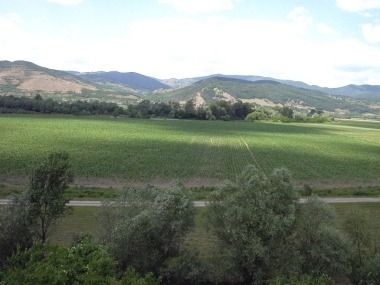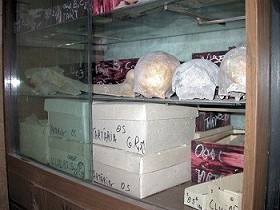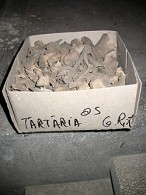
In 1961 Nicolae Vlassa (archaeologist at the Cluj Museum) recovered three little, inscribed plates of baked clay together with a small pile of offerings, associated to the bones of a mature human being, estimated to be 35-40 years old. [9] Vlassa cautioned immediately that "the find being quite recent, we can as yet offer only some general remarks about its meaning and importance". [10] But year after year he published on different occasions the same information which he had written in the preliminary report. [11] And also after 14 years he continued to alert the reader about the circumstances that he was offering only some remarks because of the novelty of the discovery.  Here is in synthesis the scenario interpreted by Vlassa:
 Let me now consider and challenge some of the myths on those mythical artifacts on the basis of a direct investigation of them and of the human bones. Let me now consider and challenge some of the myths on those mythical artifacts on the basis of a direct investigation of them and of the human bones.In fact the human remains which accompanied the tablets are still preserved in Cluj, in the basement of the National History Museum of Transylvania. To help solve the controversy about Tărtăria, Gheorghe Lazarovici and myself, under the patronage of the Prehistory Knowledge Project, in October 2003 went in search of the bones and found them.  Then we asked for an anthropometric analysis of the human remains from the Centre for Anthropological Research of Romanian Academy of Science at Iasi (Georgeta Miu) and sent a sample of them to Rome to the Laboratory of the Department "Scienze della Terra" of La Sapienza University for a C14 analysis (Gilberto Calderoni). We asked also for an examination of the tablets to the Mineralogy Department of the Faculty of Biology and Geology of Cluj University (Corina Ionescu and Lucretia Ghergari). Then we asked for an anthropometric analysis of the human remains from the Centre for Anthropological Research of Romanian Academy of Science at Iasi (Georgeta Miu) and sent a sample of them to Rome to the Laboratory of the Department "Scienze della Terra" of La Sapienza University for a C14 analysis (Gilberto Calderoni). We asked also for an examination of the tablets to the Mineralogy Department of the Faculty of Biology and Geology of Cluj University (Corina Ionescu and Lucretia Ghergari).
| |
Merlini Tărtăria | 1 | 2 | 3 | 4 | 5 | 6 | 7 | 8 | 9 | 10 | 11 | 12 | 13 | 14 | 15 | |